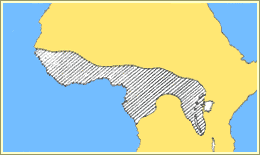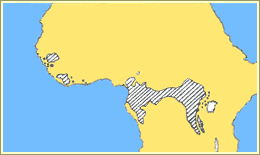

There are three significant and interrelated threats to free-living chimpanzees: habitat destruction, logging, and the bushmeat trade. With the continual rise in human population comes increasing demand for land for living and agriculture; local agricultural activities are encroaching ever deeper into even protected areas of chimpanzee habitats.
Logging clears the land for expanding agriculture but also for economic gain; the exotic woods of the equatorial forests garner high prices in lumber markets around the world. In addition to the direct loss of habitat to logging, lumber companies build large roads into once pristine forest, dividing up chimpanzee territory, separating communities, and, most significantly, allowing easy access to bushmeat traders.
While subsistence hunting of chimpanzees as a source of meat has gone on for centuries, the level of illegal hunting has risen in recent years to unsustainable levels. A thriving world market for bushmeat – the meat of animals from African forests, including that of chimpanzees – has arisen and is now a major threat to their survival.
Chimpanzees used to live throughout equatorial Africa from southern Senegal through Central Africa to western Tanzania. This is an area almost the size of the United States and includes 25 countries.
Today, chimpanzees are extinct in 4 of those countries. Another 5 countries have small, scattered populations of a few hundred. Their disappearance is inevitable. Only 10 countries have chimpanzee populations that exceed 1,000. Only 50 years ago there were probably several million chimpanzees in Africa; now, there are estimated to be only about 200,000 chimpanzees remaining.
Source: Tess Lemon, Chimpanzees, Whittet Books, London, 1994 | Save the Chimps

